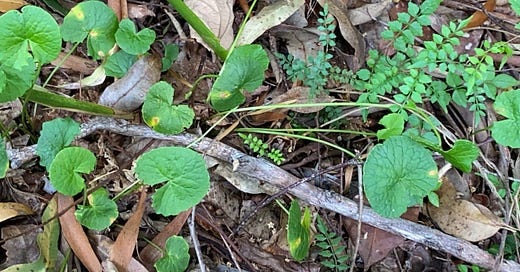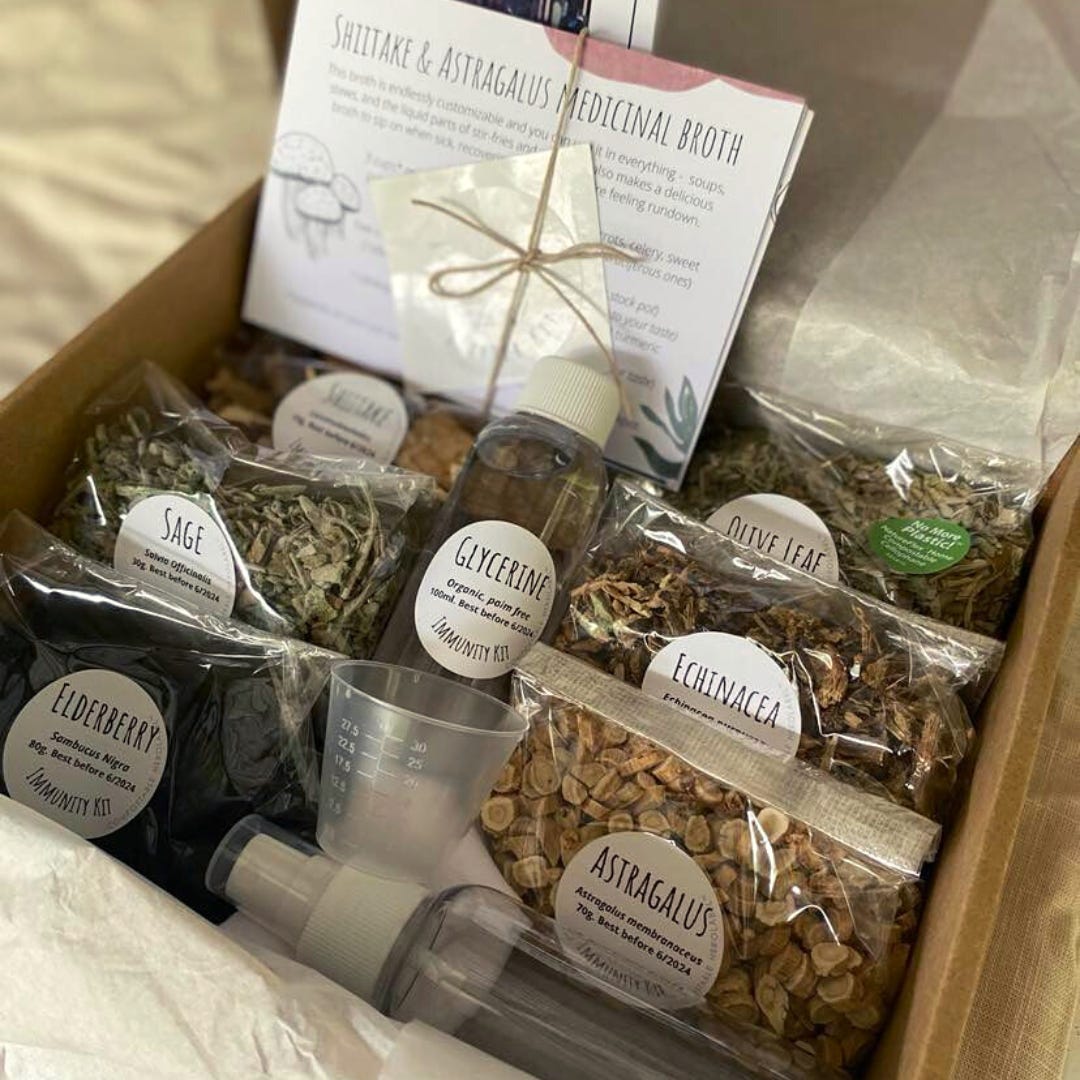Distribution
Originated in Asia, India and southeastern US but is now pantropical. It is naturalised in tropical Africa, Asia, Australia, South America and some Pacific islands.
How to identify it
Gotu kola is a perennial, creeping groundcover.
Leaves are 2-4cm wide and kidney-shaped, with a v-shaped slot where the leaf joins the stem.
Leaves have serrated margins. The edges look as if they have been cut with pinking shears.
Leaves have distinct palmate veins (branching out from a single point).
The leaves are borne on petioles or stems, about 2-4cm long.
The stems are slender stolons (creeping horizontal plant stems or runners that take root at points along its length to form new plants).
Stems are green to pink in colour, connecting plants to each other.
The root is a cream-coloured rhizome, covered with root hairs that grow vertically down.
The flowers are white or pinkish to red in colour, and found in small, rounded bunches (umbels) near the surface of the soil. They are almost invisible, as they are less than 3mm in size. Unless you look carefully for them they are easy to miss.
Each flower bears five stamens and two styles.
The fruit are densely reticulate (form a cluster), distinguishing it from species of Hydrocotyle which have smooth, ribbed or warty fruit.
There are many plants that look similar, such as swamp pennywort (Centella cordifolia), kidney weed (Dichondra repens), native violet (Viola hederacea), coast pennywort (Hydrocotyle bonariensis), alehoof (Glechoma hederacea), several ranunculus species and other Hydrocotyle species. Before using gotu kola, it is important to make sure you have the correct plant.
To view a Facebook live video presentation I did on correct plant ID of Gotu Kola Click Here
Seasonal Herbal Immunity Kits Now Available
If you would like to boost your immunity this winter and be all stocked up and ready to care for yourself and your family over cold and flu season get making now with the DIY Herbal Immunity kit.
The kit contains:
Elderberry, Echinacea, Olive leaf, Astragalus, Shiitake, Sage.
Some of the remedies you’ll make include
🌿Olive Leaf Tincture (extract)
🌿Elderberry syrup
🌿Elderberry oxymel.
🌿Echinacea and Sage sore throat remedy,
🌿Fever support tea,
🌿 Echinacea glycetract,
🌿immune-nourishing medicinal broth,
🌿 post-illness recovery Astragalus nut butter balls and more!
Each herb comes with 2 – 3 recipes for you to choose from. You can make them all, or pick your favs to make again and again.
Soon Cat and I will be releasing details of our upcoming online Herbal Immunity Course. Stay tuned!
Coming up next week
Next week I will be sharing the full Gotu Kola monograph with everything you need to know about Gotu Kola including Names, distribution, harvesting, folk medicine, research, uses, actions and cautions and contraindications.
I would like to acknowledge the Kabbi Kabbi/Gubbi Gubbi peoples on who’s lands I live and work. I acknowledge that sovereignty was never ceded and pray this truth be acknowledged and respected by all who live, work and govern these lands.







